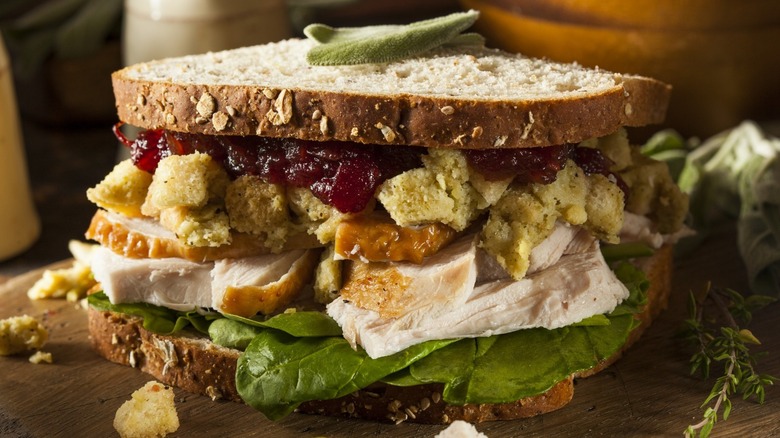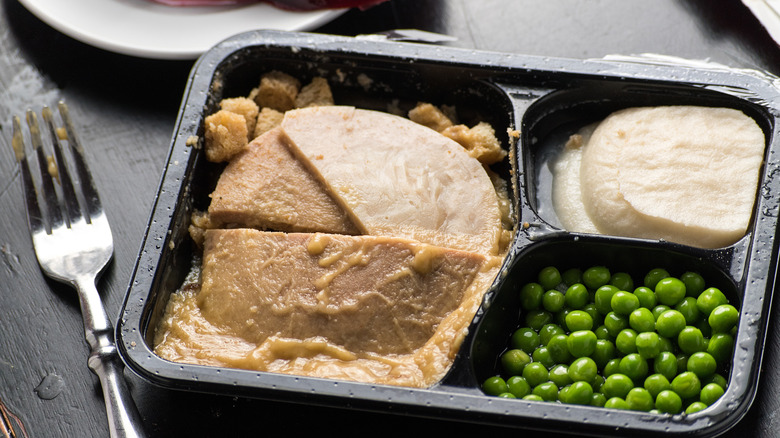How Leftover Thanksgiving Turkey Led To The First TV Tray Dinner
They're frozen, they're fast, and they're filling — at least that's what they're marketed to be. The frozen TV dinner is a staple of cheap, easy, prepared meals, costing only a few dollars at most to prepare a full meal in only a matter of minutes. True, the TV dinner isn't exactly the healthiest food option in the world due to all that sodium, saturated fat, and starches (via The Cleveland Clinic), but there are a few frozen dinners that can be nutritious without sacrificing the quick and easy prep time. The Daily Meal suggested several healthy frozen dinners, from fish taco bowls to chicken enchilada bakes, that avoid the usually unhealthy (but sometimes delicious) offerings of flash-frozen foods.
Just how exactly did someone come up with the idea of putting meat, potatoes, and vegetables on a tray and freezing them? While outlets such as The New Yorker and Smithsonian discuss William Maxson's frozen military rations as the first "TV dinner," Maxson's dinners never made it to market. The first consumer TV dinner was actually the result of a miscalculation, a sort of "happy accident," and quick thinking, which led to Americans being able to enjoy a Thanksgiving dinner anywhere and at any time. It's time to peel back the film, stir the potatoes, and learn about how Thanksgiving led to the very first TV dinner.
Too much turkey and the first frozen dinner
While there are many differing stories about who popularized the TV dinner first, the most popular theory is credited to the Swanson Food Company in 1953. Via Back Then History, a Swanson employee and salesman by the name of Gerry Thomas noticed the company had a surplus of 250 tons of frozen turkey sitting in refrigerated railroad cars. The company had apparently overestimated how much turkey it was going to sell for Thanksgiving, and more than a few tons of poultry were just sitting around. To get rid of the massive surplus, Thomas suggested that the company put the turkey in aluminum trays, alongside other holiday staples such as cornbread, stuffing, and potatoes. Thomas was apparently inspired by Pan Am airline's own in-flight meals, which were also served on aluminum trays (a claim backed by Pan Am Historical Foundation).
In 1954, Swanson launched its first TV dinner — the leftover Thanksgiving turkey, gravy, cornbread stuffing, sweet potatoes, and buttered peas. To really drive home that this was a dinner meant for eating while sitting in front of the TV, the box was even designed to resemble a TV, complete with little dials and knobs. By the end of 1954, the company had sold 10 million trays. Thomas, for his part, was credited as the inventor of the TV dinner and given a spot in the American Frozen Food Institute's Hall of Fame (via Back Then History).

